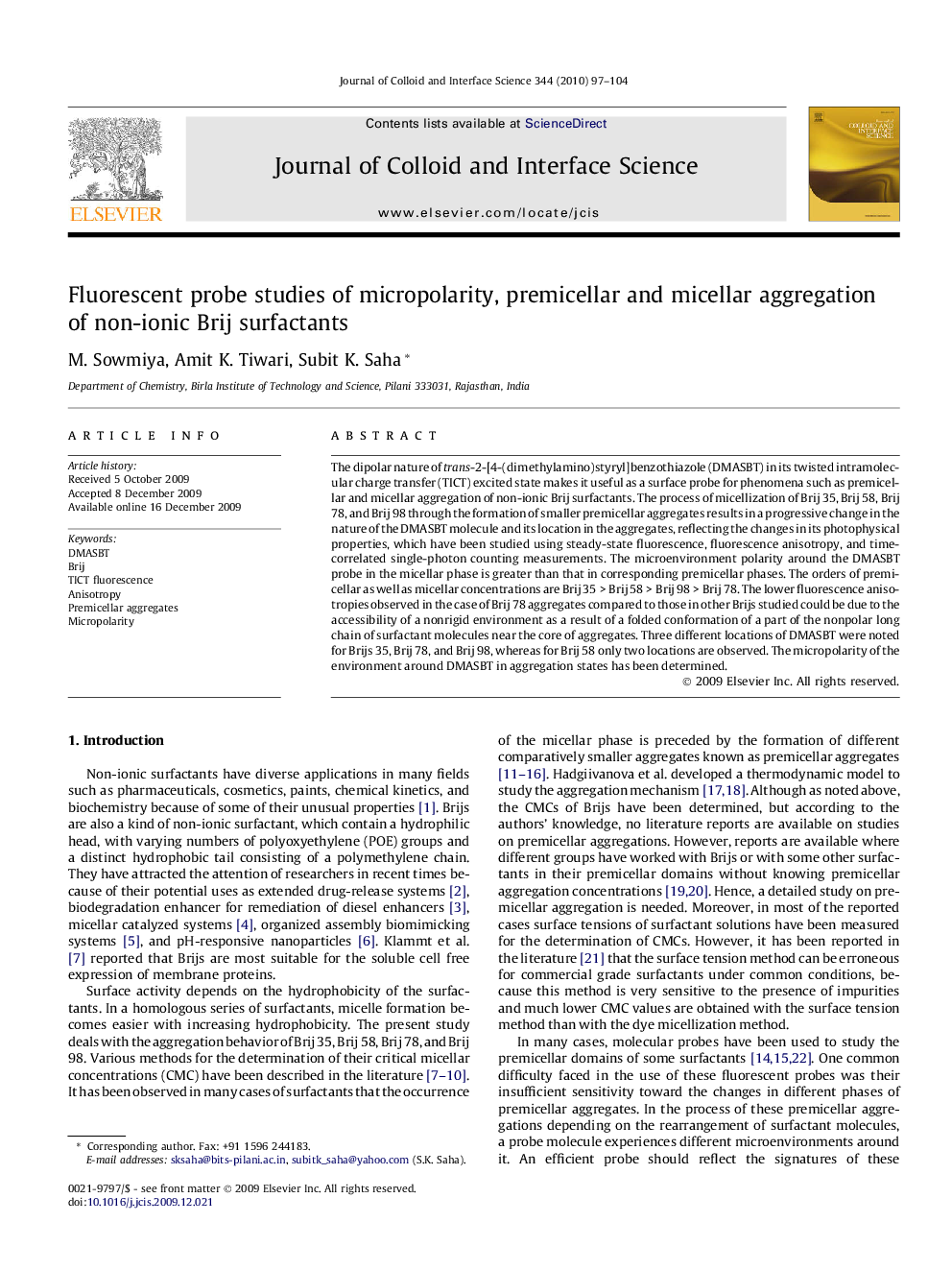| Article ID | Journal | Published Year | Pages | File Type |
|---|---|---|---|---|
| 610227 | Journal of Colloid and Interface Science | 2010 | 8 Pages |
The dipolar nature of trans-2-[4-(dimethylamino)styryl]benzothiazole (DMASBT) in its twisted intramolecular charge transfer (TICT) excited state makes it useful as a surface probe for phenomena such as premicellar and micellar aggregation of non-ionic Brij surfactants. The process of micellization of Brij 35, Brij 58, Brij 78, and Brij 98 through the formation of smaller premicellar aggregates results in a progressive change in the nature of the DMASBT molecule and its location in the aggregates, reflecting the changes in its photophysical properties, which have been studied using steady-state fluorescence, fluorescence anisotropy, and time-correlated single-photon counting measurements. The microenvironment polarity around the DMASBT probe in the micellar phase is greater than that in corresponding premicellar phases. The orders of premicellar as well as micellar concentrations are Brij 35 > Brij 58 > Brij 98 > Brij 78. The lower fluorescence anisotropies observed in the case of Brij 78 aggregates compared to those in other Brijs studied could be due to the accessibility of a nonrigid environment as a result of a folded conformation of a part of the nonpolar long chain of surfactant molecules near the core of aggregates. Three different locations of DMASBT were noted for Brijs 35, Brij 78, and Brij 98, whereas for Brij 58 only two locations are observed. The micropolarity of the environment around DMASBT in aggregation states has been determined.
Graphical abstractThe dipolar nature of trans-2-[4-(dimethylamino)styryl]benzothiazole in its twisted intramolecular charge transfer excited state makes it useful as a surface probe for phenomena such as premicellar and micellar aggregation of non-ionic Brij surfactants.Figure optionsDownload full-size imageDownload high-quality image (126 K)Download as PowerPoint slide
